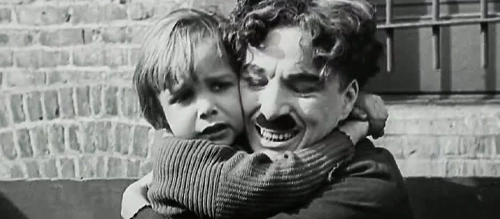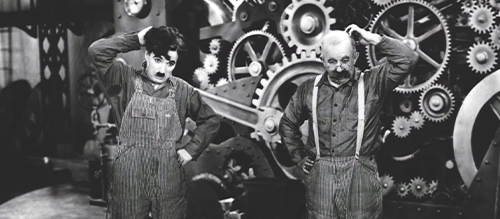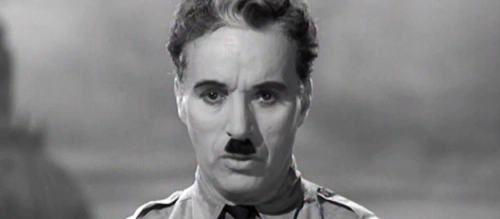Where to Start with Charlie Chaplin
For more than one hundred years, people the world over have stared wide-eyed at the flickering images that we each call cinema and have hoped, have dreamed, have cried, and have laughed, alongside Charlie Chaplin.
A silent era pioneer and perhaps the most important and influential person in Hollywood history, the British filmmaker has long been dubbed “the King of Tragedy”, his renowned character The Tramp described by Chaplin himself as “a tramp, a gentleman, a poet, a dreamer, a lonely fellow always hopeful of romance and adventure”. Cinema has never seen such an iconic figure, one whom holds the existential fears and anxieties of humanity so carefully within its skeleton, and can offer catharsis in spades, be it through laughter, tears, or most importantly resistance.
To this immortal emblem of art and culture, love and survival were so often the only things he had to hope for, his defiance of authoritarianism and even dictatorship a powerful by-product of the humanity and empathy that existed within each character choice, within each frame of film, within each narrative and theme.
Born to a woman who would be confined to a mental hospital and suffer ill-health throughout most of her parental life, Chaplin’s childhood was spent between the streets and the stage, his performative style inspired by those he met, those he knew, and those he admired. His less-than fortunate childhood imbued all he did, his questioning of The Way Things Are a natural result of his love for his mother contradicting the rules and societal norms of the time. He believed that “humour heightens our sense of survival and preserves our sanity”, and he used it to champion togetherness and empathy even in times of great strife. His was a character sad and down on his luck, but he made more people laugh than any person in history.
Upon making his name in Hollywood and becoming one of the silent era’s most powerful filmmakers (himself a studio head), Chaplin bought his mother a mansion in Los Angeles, complete with a swimming pool. His work would evolve and revolutionise the form of film, would challenge new conventions, and always fight the good fight, even when that fight was with powerful dictators in the throngs of war.
Anyone who has ever seen a movie owes Chaplin a debt, said screenwriter Daniel Taradash when introducing The Tramp as the recipient for the first-ever honorary Oscar at the 44th Academy Awards, “for wherever and whenever there is communication, a screen and audience, whether here on Earth and now or in some unfathomable future on some far away star, time is Charlie Chaplin’s dearest and eternal friend.”
Cinema in its silent form, its talkies, and even the in-between, is arguably no more joyful, influential and revolutionary than in the work of Charlie Chaplin. In this guide from The Film Magazine, we offer the best films to start on your own unforgettable journey. This is Where to Start with Charlie Chaplin.
1. The Kid (1921)

The Kid represents Charlie Chaplin’s purest self on the big screen, his 100-plus-year-old masterpiece of physical comedy the film that best encapsulates what made The Tramp cinema’s most recognisable character.
Sound is unnecessary, colour too, for what Chaplin delivers in The Kid remains as riveting as it ever was: the gags pitch perfect, the narrative hearty, each scene meaningful, its themes digestible.
Chaplin tells of The Tramp befriending an orphaned child and the two of them resorting to hijinks and swindles to make enough money to eat. In one sequence, the child roams the streets, throwing stones to smash windows, Chaplin’s Tramp dressed as a “window repair man” who just so happens to be walking by, ready to take payment for his repairs. The duo are, of course, reprimanded, attacked and chased. Chaplin places us against the authority of the police force, asking us to question the morality behind the rules just as he would time and time again for years to come, and imploring us to care about a homeless man and his orphaned friend. To Chaplin, cinema was what Roger Ebert coined as the ultimate “empathy machine”, and in The Kid you see the seeds of his short film work come to bloom in this feature-length masterpiece of a by-gone era that remains as relatable as it ever was.
The Kid helped to solidify Charlie Chaplin as one of the world’s most-recognisable performers, and offered joy to audiences at a time when The Great War’s effects were still being felt, when wealth disparity was huge, when oppression was rife and The Great Depression was just around the corner. This was escapist fun that spoke to the underclasses, that punched up as all great comedies should, and it is as rapid and funny as anything Chaplin (or anyone else) would ever make.
2. Modern Times (1936)

Almost a decade after the birth of the “talkie”, Charlie Chaplin’s resistance to the cinema of sound (which he felt would mark the end of artistic innovation in the film industry) was finally broken. The world waited with bated breath to hear The Tramp speak for the first time, and Chaplin’s mid-30s comedy allegory for workers rights and better social care, Modern Times, promised just that.
Title cards adorned this black and white film released just three years before the technicolour magnificence of The Wizard of Oz, and each slapstick scenario seemed to pile on top of the next in a manner only Chaplin was capable of achieving. Throughout the film, The Tramp finally finding his voice was teased time and time again, but Chaplin understood that people from The Tramp’s walk of life weren’t given a voice very often, and as such made viewers wait 80-plus minutes of his 87-minute runtime to finally hear him.
When The Tramp was finally heard, he sung in a completely made up language. It ended up being the biggest joke of Chaplin’s career.
It was a moment that epitomised this unique filmmaker’s revolutionary attitude and acted as a big middle finger to the changing masters of Hollywood in the age of sound. The Tramp was a character who didn’t need to talk, who would never have his opinions heard in real-life due to classist structures and wealth-based oppression, and Chaplin was of a style of cinema that celebrated the fluidity of camera movements, that would adorn each scene in decoration and props, snow machines and water, all in the name of entertainment, something that sound cinema (with its large statuesque microphones) was not able to achieve at the time. The Tramp was a character unconnected to one nationality or one language, he was a universal emblem for hope in times of despair, and in Modern Times Chaplin solidified this for all time.
When getting to know Charlie Chaplin, Modern Times has it all. Sound, silence, gags, meaning, love, hope, despair, anguish. It is, truly, a special film.
3. The Great Dictator (1940)

It wasn’t until 1940 that The Tramp was first present in a “full talkie”. Released the year after the start of World War II, and prior to the United States becoming involved in the conflict due to the 1941 attack on Pearl Harbor, The Great Dictator mocked and belittled the dictators of Europe, namely Adolf Hitler and Benito Mussolini, offering cinema’s greatest wartime commentary on the horrifying politics and cult of personality that dominated the era’s far-right nationalist agendas.
In The Great Dictator, The Tramp embodies a Jewish barber fleeing the racist and oppressive regime of Tomainia, led by dictator Adenoid Hynkel. The barber and Hynkel share a shocking resemblance, both played by Chaplin with his self-aware toothbrush moustache and combover. Through misunderstandings and fate, the Jewish barber is accidentally placed at the head of a rally for the racist regime, this would-be victim mistook for the leader of his would-be murderers. In front of the world, face directly in front of the camera, the Jewish barber, the Tramp and Chaplin himself form as one force for empathy, for humanity, for good. He gives perhaps the greatest speech in film history; one which only becomes more extraordinary when considering what great threat he could have been in had the Nazis won the war or the US taken a different side in it. It was a speech that encapsulated all that Charlie Chaplin and The Tramp stood for, that illuminated the man’s hope in times of darkness, that made him one of the greatest storytellers to ever live.
It’s a screen monologue of the highest class, both in terms of writing and performance, and every word is imbued with a revolutionary spirit that proudly notes the differences between right and wrong. This is one of the greatest moments in the cinema of sound, from a man reluctant to ever embrace it, from a filmmaker so eternally tied to the silent form.
The whole of The Great Dictator is a timeless message on fighting the powers of evil, of recognising tyrants and bigots, of fighting to find the belief that our fellow human beings are inherently good. Like Chaplin says, “we all want to help one another, human beings are like that. We want to live by each other’s happiness, not each other’s misery”.
That was Chaplin. That was what his cinema represented and will always represent. He was a human being in a machine world, a voice of reason and love and empathy in a world of hate, of oppression, of tyranny. He was a special filmmaker, a remarkable screen philosopher, an unmissable icon of the 20th century whose legacy will never cease.
Recommended for you: Where to Start with Laurel & Hardy
The work of Charlie Chaplin can be enjoyed by anyone, no matter your age. Whilst the themes of each of his pictures are no doubt complex and best enjoyed by adults, the universality of his narratives are accessible, his performances lovable, his gags funny. Chaplin truly was one of the greatest screen artists of all time, and a rightful emblem of cinema and of western culture to this day. His films are worth your time, his version of cinema bound to bring you joy. Discover his work for yourself. Watch, smile, and fall in love with one of the best to ever do it.

